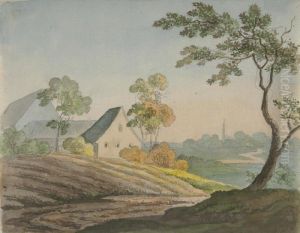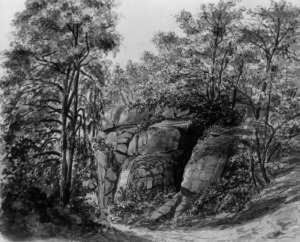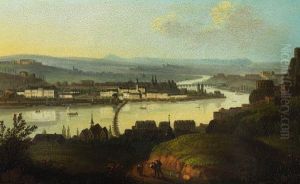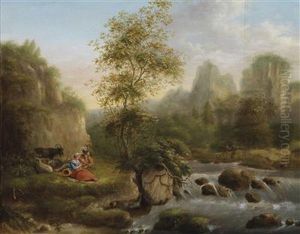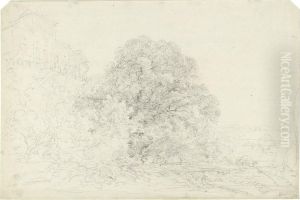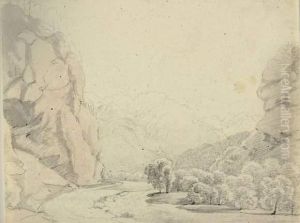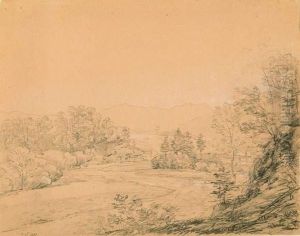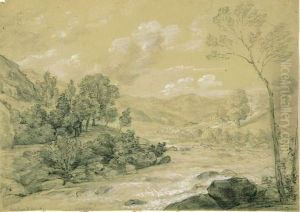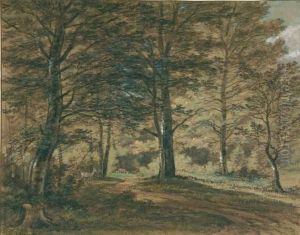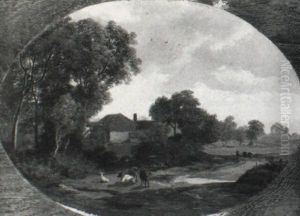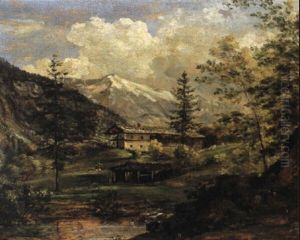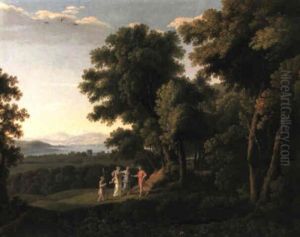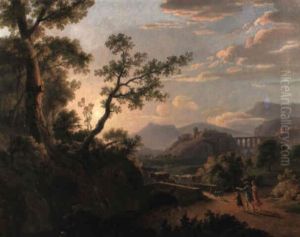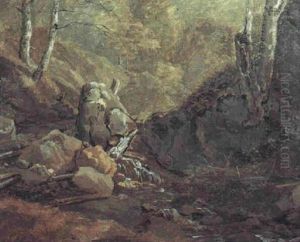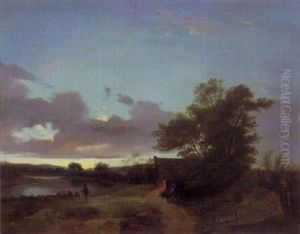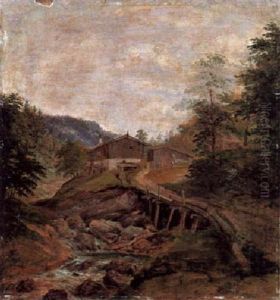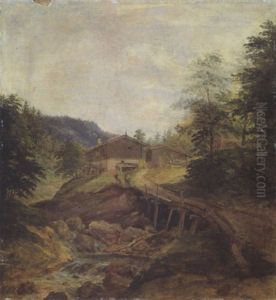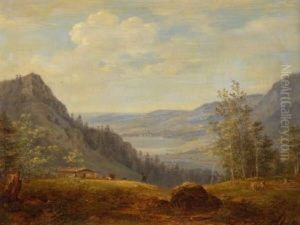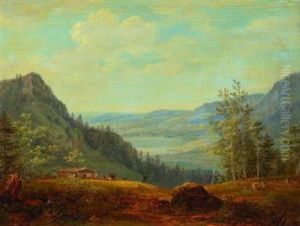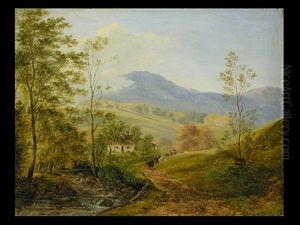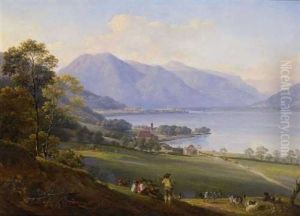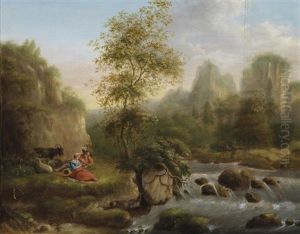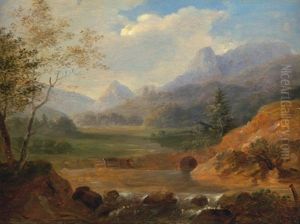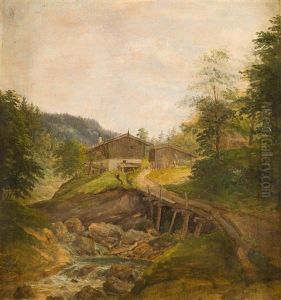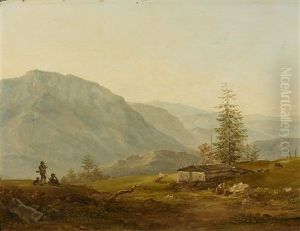Cantius Dillis Paintings
Johann Georg von Dillis, known as Cantius Dillis, was a German painter born on December 26, 1779, in Grüngiebing, Bavaria. He was a landscape artist who played a significant role in the early 19th-century art scene in Germany. Dillis grew up in a family with artistic interests; his father was the court painter to the Elector of Bavaria, which provided him with an environment conducive to nurturing his artistic talents.
In his formative years, Dillis was influenced by the works of landscape painters such as Claude Lorrain and Nicolas Poussin. He studied at the Academy of Fine Arts Munich and was particularly drawn to the study of nature, which became a central theme in his work. Dillis was part of the Romantic movement, which emphasized emotion and individualism, as well as glorification of the past and nature.
Dillis' landscapes are characterized by their meticulous detail, vibrant colors, and the interplay of light and shadow. He often depicted the Bavarian countryside, with its rolling hills, forests, and rivers, capturing the changing seasons and times of day with sensitivity and a keen eye for the sublime in nature. His work not only reflects the beauty of the natural world but also the Romantic spirit of his age, which sought refuge and inspiration in nature from the rapidly industrializing society.
Throughout his career, Dillis received considerable acclaim for his work. He served as a court painter like his father and was also a conservator and advisor for the Bavarian royal collection of paintings. In this capacity, he had significant influence on the development of public art collections in Munich. Despite his successes, Dillis remained deeply connected to the landscape, and his paintings continued to echo his personal experiences and connection with the natural world.
Cantius Dillis passed away on September 28, 1867, in Munich. His legacy includes a body of work that continues to be appreciated for its contribution to the Romantic landscape genre and its reflection of the 19th-century European art scene. His paintings are held in various collections and museums, testifying to his enduring impact on the world of art.
